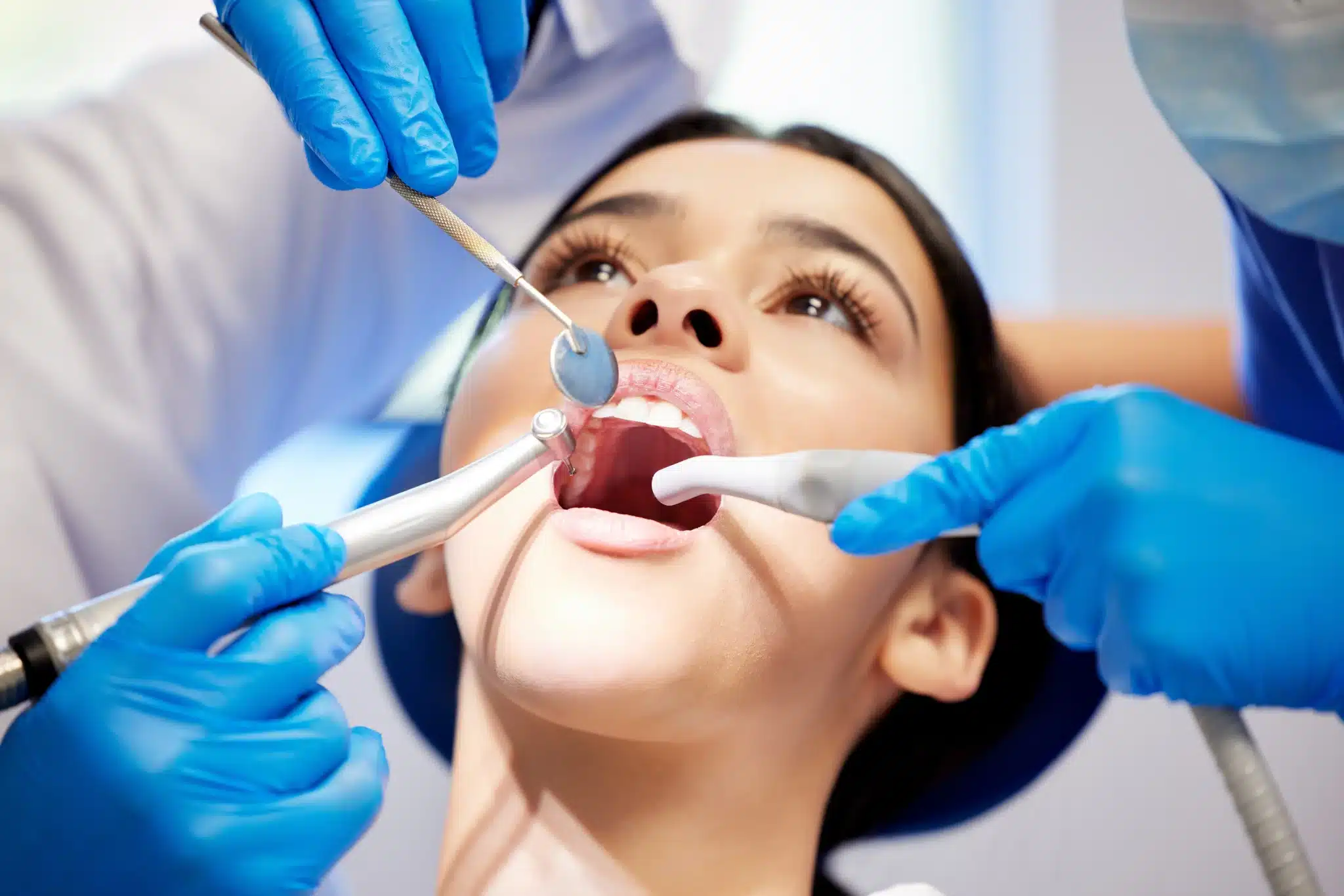Oral Surgery Explained: Advanced Solutions for Dental Care
TLDR / Key Takeaway
Oral surgery addresses complex dental issues like impacted teeth, jaw problems, and dental implants. These procedures can restore your oral health, improve functionality, and enhance your quality of life when general dentistry isn’t enough.
Introduction: Why Oral Surgery Matters
Sometimes, dental issues go beyond the scope of routine cleanings and fillings. In such cases, oral surgery can provide the solutions needed to restore both functionality and aesthetics. Whether it’s extracting impacted wisdom teeth or addressing jaw misalignment, oral surgery plays a vital role in maintaining your overall oral health.
This guide explores the most common oral surgery procedures, their benefits, and what you can expect during your treatment journey.
What Is Oral Surgery?
Oral surgery is a specialized field of dentistry that focuses on diagnosing and treating complex conditions affecting the teeth, gums, and jaw. Unlike general dentistry, oral surgery often requires more advanced techniques and anesthesia to address issues effectively.
Common Oral Surgery Procedures
- Tooth Extractions: Removing impacted or severely damaged teeth.
- Dental Implants: Replacing missing teeth with durable, natural-looking solutions.
- Bone Grafting: Strengthening the jawbone for future implants.
- Jaw Surgery: Correcting misalignment and improving functionality.
- Biopsy and Lesion Removal: Diagnosing and treating oral abnormalities.
Benefits of Oral Surgery
Relief from Pain and Discomfort
Oral surgery effectively alleviates chronic pain caused by issues such as impacted teeth, severe infections, or TMJ disorders. For example, removing impacted wisdom teeth can eliminate persistent jaw pain, while treating TMJ can restore jaw mobility. Prompt treatment not only relieves discomfort but also prevents it from worsening, improving your day-to-day quality of life.
Improved Oral Function
Structural problems, such as misaligned jaws or missing teeth, can interfere with essential activities like chewing and speaking. Procedures like jaw surgery realign the jaw to restore balance, while dental implants replace missing teeth to provide full functionality. These solutions enhance both your daily comfort and long-term oral health.
Enhanced Aesthetics
Oral surgery goes beyond health benefits to significantly improve your smile’s appearance. Dental implants fill gaps with natural-looking replacements, and corrective jaw surgery creates a more symmetrical facial profile. These changes can boost your self-confidence and make social interactions more enjoyable.
Prevention of Further Issues
Proactive oral surgery addresses problems before they lead to severe complications. For instance, treating gum disease with surgical intervention can stop infection from spreading to the jawbone. Similarly, bone grafting can prevent bone loss, ensuring your jaw remains strong enough to support teeth or implants. This long-term approach safeguards your oral health and minimizes future risks.
Common Oral Surgery Procedures in Detail
1. Tooth Extractions
Tooth extractions are among the most common oral surgery procedures. While some extractions are simple, impacted wisdom teeth or severely damaged teeth often require surgical intervention.
- When It’s Needed: Impacted wisdom teeth, severe decay, overcrowding.
- What to Expect: Local or general anesthesia, followed by removal of the tooth and careful post-operative instructions.
2. Dental Implants
Dental implants are a permanent solution for missing teeth. They consist of a titanium post inserted into the jawbone, topped with a custom crown.
- Benefits: Durable, natural appearance, and prevents bone loss.
- Ideal For: Patients with missing teeth and sufficient bone density.
3. Bone Grafting
Bone grafting strengthens the jawbone, making it possible to place dental implants or restore bone lost due to trauma or disease.
- When It’s Needed: Insufficient jawbone density for implants.
- What to Expect: A graft material is placed to promote new bone growth.
4. Jaw Surgery
Orthognathic surgery corrects misaligned jaws, improving both function and appearance.
- When It’s Needed: Difficulty chewing, speaking, or breathing due to jaw misalignment.
- What to Expect: Collaboration between orthodontists and oral surgeons for pre- and post-surgical care.
5. Biopsy and Lesion Removal
When abnormalities like lumps or lesions appear in the mouth, a biopsy can help diagnose the issue and guide further treatment.
- When It’s Needed: Suspicious growths or persistent sores.
- What to Expect: Tissue is removed and sent for lab analysis.
How to Prepare for Oral Surgery
Preparation is key to a successful oral surgery experience. Here’s what to consider:
- Consultation: Your dentist or oral surgeon will evaluate your condition and discuss treatment options.
- Medical History: Inform your surgeon of any medications or medical conditions.
- Pre-Surgical Instructions: Follow guidelines like fasting before anesthesia and arranging transportation home.
Post-Surgery Recovery Tips
Manage Pain and Swelling
Post-surgery pain and swelling are normal and can be managed effectively. Use prescribed pain medications as directed by your surgeon to stay ahead of discomfort. Applying ice packs to the outside of your jaw in 20-minute intervals can significantly reduce swelling. Remember, staying calm and following these instructions can help speed up your recovery.
Maintain Oral Hygiene
Keeping the surgical site clean is crucial for preventing infection. Gently rinse your mouth with warm saltwater starting 24 hours after surgery to remove debris and soothe the area. Avoid using mouthwash or brushing near the surgical site until your surgeon advises it’s safe. Maintaining proper hygiene supports quicker healing and minimizes complications.
Follow a Soft Diet
Your body needs nutrition to heal, but chewing can be challenging after oral surgery. Stick to soft, easy-to-eat foods like yogurt, mashed potatoes, applesauce, and smoothies. Ensure these foods are rich in vitamins and protein to aid the healing process. Avoid hot or spicy foods, as they may irritate the surgical area.
Avoid Strenuous Activities
Rest is essential for recovery after oral surgery. Avoid strenuous activities, including heavy lifting, bending over, or vigorous exercise, for at least 48 to 72 hours. Overexertion can increase blood flow to the surgical site, potentially causing bleeding or delayed healing. Listen to your body and focus on recovery during this period.
Choosing the Right Oral Surgeon
Selecting an experienced and trustworthy oral surgeon is crucial for a successful outcome. Consider the following:
- Credentials and Training: Look for board-certified specialists.
- Reviews and Testimonials: Patient feedback can provide insight into the surgeon’s expertise.
- Comprehensive Care: Choose a surgeon who offers a wide range of procedures and personalized treatment plans.
When to Seek Oral Surgery
Certain symptoms and conditions warrant immediate attention from an oral surgeon:
- Severe tooth pain or sensitivity.
- Persistent jaw pain or difficulty moving your jaw.
- Missing teeth affecting your ability to eat or speak.
- Unusual growths or lesions in your mouth.
If you’re experiencing any of these issues, consult an oral surgeon to determine the best course of action.
Conclusion: Restoring Health with Oral Surgery
Oral surgery is a powerful tool for addressing complex dental issues that go beyond routine care. From relieving pain to restoring function and aesthetics, these procedures offer life-changing benefits for patients.
If you’re ready to improve your oral health and quality of life, schedule a consultation with The Dentists’ Office today. Our experienced team is here to guide you every step of the way.


